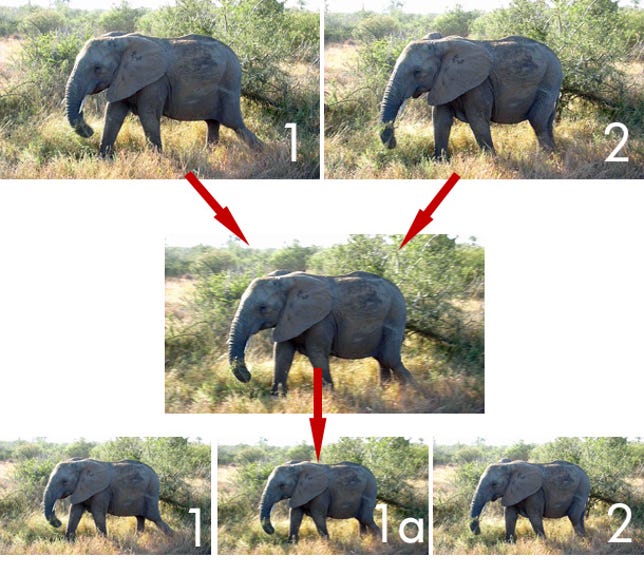
Geoffrey Morrison/CNET
Shopping for a TV can seem like a nonstop flood of numbers and jargon: contrast, 1080p, 240Hz, HDMI, 3D, and more. While some of these terms are descriptive, others are designed to fool you into thinking one TV is better than another, when actually it isn’t.
Compiled here is a directory of every term you’ll need to navigate the TV waters. Instead of one long article describing it all, it’s broken down into sections so you can find just what you’re looking for.
Picture quality The most important aspect of picture quality is contrast ratio. The problem is, every manufacturer lies about its contrast ratio: “Contrast ratio (or how every TV manufacturer lies to you).”
Adjusting your TV’s color temperature can make the image more realistic. But what is TV color temperature?
Does your TV have a “Game Mode“? This can actually help improve your gaming experience, but at the expense of picture quality.
Having trouble figuring out the difference between the different TV technologies? Check out “LED LCD vs. plasma vs. LCD.”
Most of the ads you’ll see talk about “LED TVs.” There’s no such thing as an “LED TV.” Find out why “LED does not mean a better picture.”
The ability to create a uniform image, like a solid screen of black or white, is difficult for many LCDs and LED LCDs. But is “LCD and LED LCD HDTV uniformity a problem?” In short, yes.
And while we’re talking about LCD and LEDs, it’s important to understand the different technologies used in LED LCDs, which is covered in-depth in LED LCD backlights explained.
One of the early concerns with plasma TVs was the possibility of an image getting stuck or “burned” into the screen. But these days, “Is plasma HDTV burn-in a problem?” In short, not really.
OLED is the next generation of TV technology. It has the best picture quality characteristics of plasma and LCD, with few of the drawbacks of either. It’s still shrouded in mystery, but here’s what we know.


Geoffrey Morrison/CNET
Size Bigger is better, right? But how big is too big? Or in other words, how big a TV should you buy?
Several TV manufacturers are selling 70-, 80-, even 90-inch LCD TVs. They’re not without issues. So “Don’t buy a jumbo LCD TV, buy a projector.”
Front projection has come a long way from the massive CRT projectors of the ’80s and ’90s. A compelling case for “TV vs. projection: Your TV is too tiny.”
Rear-projection, on the other hand, is basically dead. Mitsubishi, the last maker of those big-screen boxes, reportedly plans to cease production.
Resolution Most TVs are 1080p. Most cable boxes output 1080i. Here’s a surprise: “1080i and 1080p are the same resolution.”
For most people, that 1080i cable box output is fine. But for others, a different resolution might be better. Find out which resolution is best for your set-top box.
Just because you have an HDTV doesn’t mean everything you watch on it is “HD.” Find out “When HD isn’t HD.”
Every TV will convert every signal you give it to display on your TV. This process is called “upconverting,” and it’s a big part of the performance of your TV. So “What is upconverting?”
One of the big buzz words this year is “4K” or “Ultra HD.” For most people, though, “4K TVs are stupid.”


Geoffrey Morrison/CNET
Refresh rate Many high-end TVs feature 120 or 240Hz refresh rates. OK, so “What is refresh rate?”
Other TVs talk about 600Hz. Is 600 better than 240? Well, believe it or not, they’re not exactly comparable. Well, then, “What is 600Hz?”
If you get one of these new 120 or 240Hz refresh-rate TVs, it won’t say you’re watching “120Hz” when you’re watching TV. Here’s why not.
3D Hard to miss all the talk about 3D. One of the biggest differences in 3D TVs is active 3D vs. passive 3D. Which one is better?
Here’s how 3D works on Blu-ray and from your 3D cable/satellite provider.
Inputs The best way to get an HD signal to your TV is with HDMI cables. You’ll often see HDMI cables for $20, $50, even $100 or more. Here’s the secret: “All HDMI cables are the same.”
It turns out, saying something hyperbolic like “All HDMI cables are the same” ruffled a few feathers. Here are the arguments, dismissed in systematic fashion, with “Why all HDMI cables are the same, Part 2” and “Still more reasons why all HDMI cable are the same.”
Once you get that TV, and all the cables, you’ll probably want to know “How to set up an HDTV.”
Bottom line TV shopping can be confusing, but a little research ahead of time can help you find the best deal and the best TV. For even more, check out CNET’s TV buying guide.
Got a question for Geoff? Send him an e-mail! If it’s witty, amusing, and/or a good question, you may just see it in a post just like this one. No, he won’t tell you which TV to buy. Yes, he’ll probably truncate and/or clean up your e-mail. You can also send him a message on Twitter: @TechWriterGeoff.




